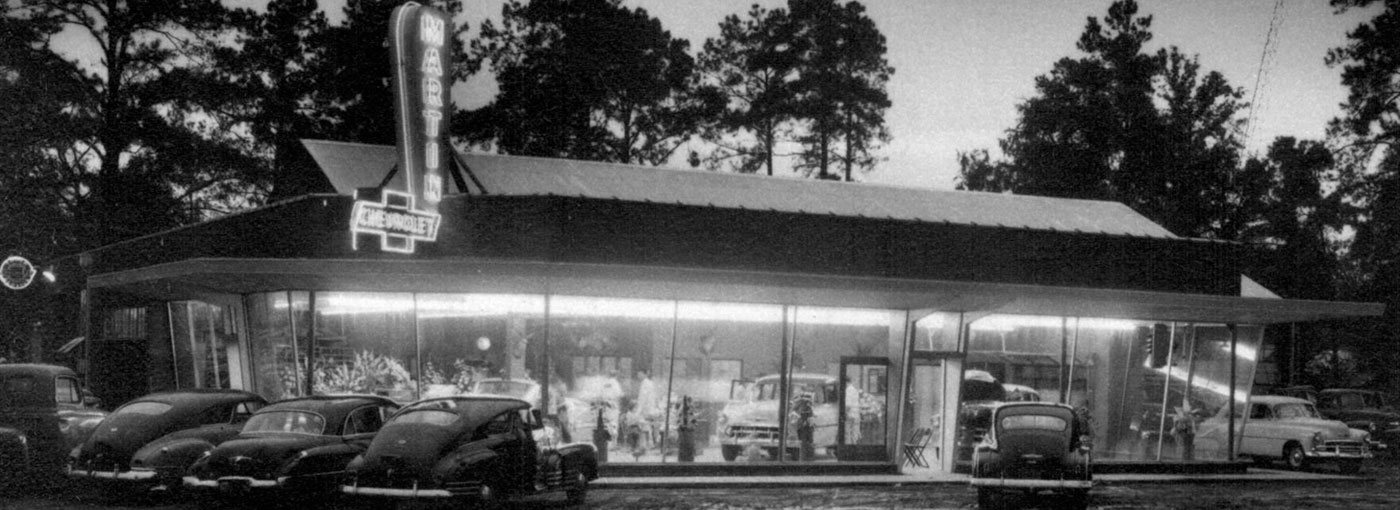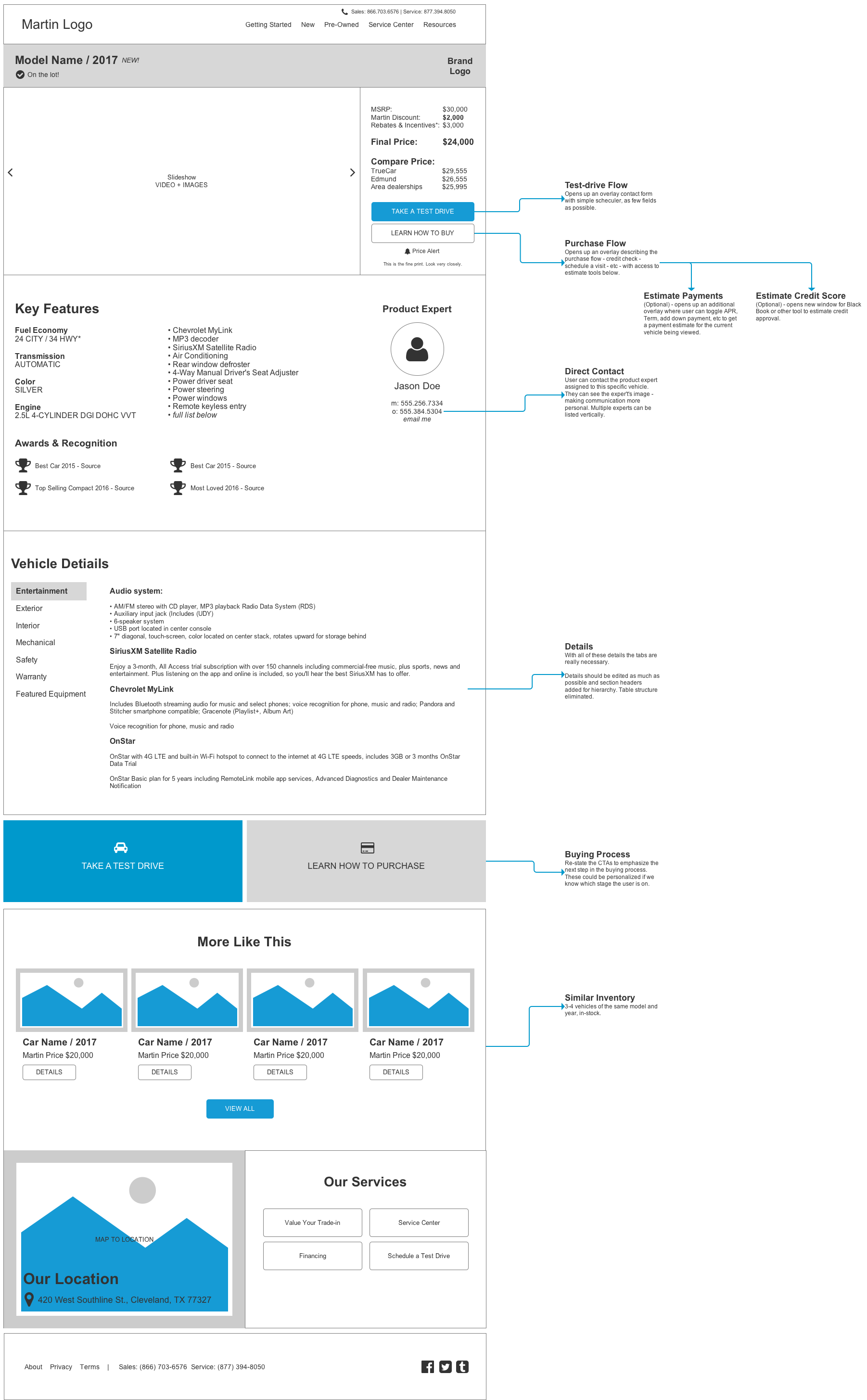Context
Martin is a Chevy, Buick, and GMC dealership in Houston, TX that has been in business since 1941. As a long time franchise retailer, Martin has always met requirements set by GM but lacked the expertise to move significantly beyond corporate guidelines. With competition in the Huston area growing, Martin asked for help differentiating.
Challenge
My team leveraged design thinking to produce an experience design strategy aimed at improving the car-buying experience. We also provided a marketing strategy to drive sales.
This project kicked off with intensive desk and on-site research to understand the nuances of the auto dealership industry and Martin’s unique operational challenges. We also engaged in user research, observing car buyers at the dealership and conducting staff interviews.
Empathy mapping sessions helped reveal critical opportunities and stages of the customer journey on which to focus our efforts. We leveraged these insights and presented a visual map of the complete car-buying experience, highlighting key pain points and dropoff. With the big picture coming into focus, the team regrouped to ideate ways to improve the car-buying experience.
Next, we shifted our attention to solve the elusive attribution issue that plagues many businesses that operate online and offline. That is, determining which marketing efforts drive a purchase and assigning credit. Offline and cross-channel efforts can be difficult to attribute. Our solution was an AI-driven, cloud-based, data warehouse that extracts critical information from multiple customer interactions and dealership systems. This automated system aggregates data in real time to reveal the marketing activity that helped generate a sale.
Alongside the attribution model, we created a content strategy based on the findings from our user research. We helped categorize the content architecture and create several articles, surveys, and resources to be published on Martin’s website. Many artifacts target new parents, with topics such as child-safety-seat installation and how to select a family-friendly vehicle. When a prospective car buyer views one of these pages our attribution model kicks in to credit their purchase or dropoff back to this content.
The findings from our on-site audit and working sessions revealed key areas where Martin could do better. These opportunities were delivered to Martin as a strategy aimed at providing a more transparent experience with less friction for customers throughout the car-buying process. Additionally, our attribution modeling is giving credit to the marketing activities which work best, allowing the marketing team to focus their efforts on the activities that drive people into the dealership. Our research recommendations and the attribution framework were presented to corporate GM and in review for a broader rollout.




